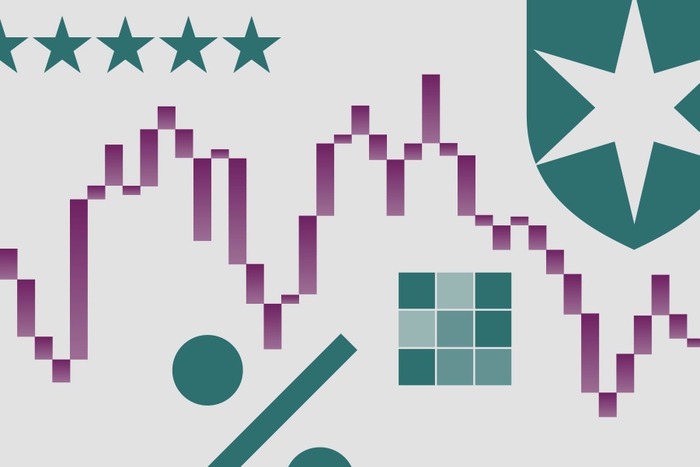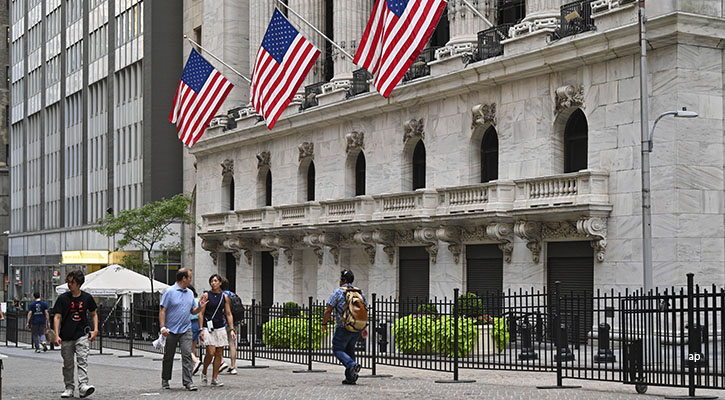A buzzword in the financial-services industry since the financial crisis is disclosure. Regulators around the world are instituting new rules to increase the transparency of managed funds. Portfolio holdings disclosure, also known as PHD, is one of the positive developments to come from this regulatory wave in many markets. Beyond regulatory mandates, we’re also seeing a rise in voluntary disclosure by asset managers across the globe, pointing to good stewardship factors beyond pure regulation.
As you’ve read in the Spotlight section, the stewardship of a fund company is an important factor for investors to consider when they select a fund. For a retail investor, the idea of stewardship is often tied up in the brand of the company. Vanguard, for example, is an impeccable brand in the eyes of most individual investors. For professional investors and advisors, transparency is an important dimension of stewardship. Easy access to information is a signal of good stewardship for funds.
This is particularly true for PHD. Regular public disclosure allows investors to determine if managers are staying within their mandates and helps provide real insight on how returns are being earned. For example, in recent years, the Nordic and Australian markets have used active-share analysis to determine the degree of active risk being taken in portfolios and how this aligns with the fees being charged by managers.
The Basics
Before proceeding, it is worth getting on the same page about some basic definitions. Portfolio holdings disclosure is where the underlying securities of a managed fund, together with their value and portfolio weight, are made available to investors. The disclosure of top 10 or material holdings does not qualify as PHD. Instead, it is the disclosure of all long positions and, in most markets, includes derivatives and short positions. Disclosure does not mean that firms are mailing paper statements to unit holders with the full listing of holdings (although some do); it just means that the portfolio information is available electronically either from the manager or some other central area (such as regulators and fund associations). Lastly, PHD does not mean portfolios are disclosed in real time but rather with some lag time, such as 60 days after period end.
Portfolio holdings disclosure is not a new phenomenon, either; it has been part of the U.S. fund market since the 1940s. Like most things in our industry, disclosure is evolving and is being affected by technology. Technology is bringing down the cost of disclosure for asset managers and is increasing the analytics and reporting that can be driven from portfolio information. The introduction of the Morningstar Style Box in 1992 is an early example of using PHD technology and analysis to make holdings-based style analysis, previously the domain of the institutional market, available to everyone.
Across the globe, we’ve seen more and more developments built off of PHD flow downstream to retail investors, including portfolio tools and attribution analysis. Portfolio disclosure has let investors build more diversified portfolios by making it easier for them to identify overlapping holdings between investments and identifying how individual stock holdings interact with funds.
We believe PHD is a key ingredient in protecting, informing, and educating investors, which, in turn, lifts confidence and attracts assets to the financial system.
PHD Around the World
The Morningstar Global Fund Investor Experience Report assesses managed fund investor experiences in 25 countries across North America, Europe, Asia, and Africa. As it did in 2013, the recently released biannual report once again takes a close look at portfolio disclosure practices, including PHD. In 2015, we find that all but one market has some form of required PHD:
.png)
The most common form of regulated disclosure is semiannual. Since our 2013 study, we have seen regulators in New Zealand introduce semiannual PHD, and Thailand will be moving from semiannual to quarterly disclosure during the third quarter of this year.
In our research, we also wanted to capture actual practices of asset managers around PHD. We used portfolios provided to Morningstar as a proxy for this analysis. Globally, Morningstar collects and processes more than 800,000 portfolios a year across a range of security types.
EXHIBIT 1 gives an indication of how often open-ended funds actually provide portfolios to Morningstar. For the purpose of this article, we expanded our analysis to 29 countries.
.png)
Only 8% of markets have regulated monthly disclosure of portfolios, but in more than 52% of those surveyed, monthly portfolios is the most dominant reporting frequency. This number grows to 72% if quarterly and monthly portfolios are combined. Clearly, asset managers are providing data more often than what is required.
Leading the way in the provision of monthly portfolios are a number of emerging markets, headed by India, but also including Brazil and South Korea. The Nordic countries of Denmark, Finland, and Norway also figure prominently. The United States, the largest fund market and one with a long history in PHD, has a regulated requirement of quarterly disclosure, but a little more than half of funds choose to disclose monthly.
At the other end of the spectrum are Australia and New Zealand, the only two markets not to have some form of mandated PHD in our 2013 study. New Zealand recently introduced PHD requirements, and the 47% of funds currently not providing portfolios should start to do so over the next two years.
Australia introduced legislation on PHD in 2013, but the regulations are still to be finalized. The earliest implementation will be July 1, 2016. Despite a lack of regulation, Morningstar has been collecting portfolios from fund managers in Australia since 2004.
The figures provided in this article are based on the country of domicile of a fund and not on the funds available for sale in a market. An investor in a market where cross-border funds are actively sold (for example, Europe, Hong Kong, and Singapore) will experience something different to the figures displayed just for the local market.
Cross-border funds domiciled in Luxembourg and Ireland typically provide monthly portfolios, which should serve to lift the experience of investors in markets such as Hong Kong and France.
Disclosure Lag Time
Getting portfolios is one thing. How old they are when we receive them is another. PHD is not about real-time portfolios. The question of appropriate lag time is often debated, and so it should be. The reality is that an appropriate lag will vary depending on the type of portfolio, style of management, and amount of money being run in the strategy. Regulators when setting maximum lag periods need to take this into account. Sixty or 90 days are common.
Our experience is that most managers can physically provide a portfolio electronically within 10 business days of period end, and they are increasingly being required to for regulatory reporting (EMIR and EIOPA Solvency II in Europe, Dodd-Frank in the United States). EXHIBIT 2 shows the number of days after period end that we typically release a portfolio into our databases for viewing and analytics. A fund that delivers a portfolio to Morningstar on day 10, but requests the portfolio to be suppressed from release until day 60 is recorded as 60 days for this analysis.
Once again, we can observe many markets where the average manager is releasing portfolios well in advance of the regulated maximum. For example, the United States carries a maximum 60-day lag requirement (45 days for quarterly portfolios), but the average manager is providing portfolios in a little more than half this time.
.png)
Another factor influencing this data is whether the portfolio is being provided in some readable electronic format or as a hard-copy document. The latter is true of many Asian markets, contributing to the slower response times. Once an electronic reporting system is established, the cost and time required to produce the report are reduced.
As we mentioned, Thailand will move from semiannual to quarterly portfolio requirements during 2015. By the end of the third quarter, new requirements will have been fully in place, which will cause the typical lag decreasing from more than 90 days to 60 days. The industry is also moving toward electronically supplying portfolios.
Overall, funds are quickly moving from semiannual or quarterly disclosure with a six- to 10-week lag to monthly disclosure with a two- to five-week lag. This increased frequency of disclosure is being driven by a number of factors in different regions.
A Benefit for All
It is important to remember that PHD is not just about giving portfolio statements to investors. It involves more investor benefits that stem from the disclosure being used by intermediaries who serve the needs of investors.
For example, financial literacy is an important topic. One component of literacy is engagement. Our experience in the United States has shown us that stronger disclosure leads to better research, tools, and media commentary—which, in turn, leads to higher levels of investor engagement.
Fund companies have long known the benefits of education and helping investors better understand and choose funds, and they have invested heavily in tools to help their clients achieve better results. Many of these tools are built around PHD, and as the self-directed segment grows and advisors move to expand and improve their offerings to clients, the demand for regular and timely information will only increase.
Another growing practice evolving around PHD is the classification of funds. While firms such as Morningstar have long used portfolio disclosure to firm up the categorization of a fund or strategy, central bodies such as fund associations have used the same approach to monitor fund categories to ensure meaningful peer-group return comparisons for investors. The United Kingdom has had this practice in place for many years, and recently, South Africa and Thailand have adopted similar models. While there remain differences around the implementation of PHD, there is an obvious trend toward greater disclosure in terms of coverage, regularity, and lags.
At its best, portfolio disclosure is more than just a regulatory requirement. It improves the industry. A whole ecosystem evolves around the process that is greater than the direct relationship between an investor and fund company. It encapsulates a large pool of research analysts, information sites, intermediaries, and the media. An investor will not necessarily have read every public document before buying a fund, but he or she will benefit from professionals reviewing these documents and surfacing the important points.
Portfolio disclosure, and the scrutiny that comes with it, underpins the efficacy of the market, lifting investor confidence and helping attract capital from investors.

















